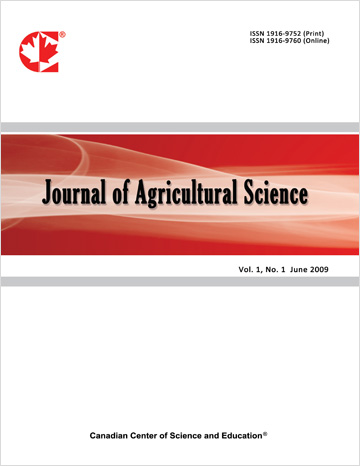Pollution of Water, Soil and Vegetables: Challenges to Growing Cities of Bahir Dar and Kombolcha, Amhara Region, Ethiopia
- Mekonnen Getahun
- Yihenew Selassie
Abstract
The study was conducted in Bahir Dar and Kombolcha growing industrial cities where urban agriculture is highly promoted. The research focused on determining the extent of contamination of soil, water and vegetables from wastewater used for irrigation and tried to suggest mitigation mechanisms against urban environmental pollution. To achieve the set objective, field works were carried out whereby soil, water and vegetables samples were collected and analyzed following standard laboratory procedures. Residents of the study areas were also interviewed to assess their attitude and observations on changes that might have occurred on the environment. Soil and water contamination levels were analyzed using World Health Organization and EU standards. Results of the study indicated that soil organic carbon, total nitrogen and available phosphorus levels were medium to high. At both experimental sites, the Na and K contents ranged from medium to high throughout the soil profile; however, the contents of Ca and Mg were high. The electrical conductivities (EC) of soils in the study ranged from 0.40 to 1.37 dS m-1 and were generally non-saline. The concentrations of heavy metals in soils samples for both Bahir dar & Kombolcha sites were found to be within the permissible levels. Analytical results of waste water samples indicated high nitrate and phosphate levels which is expected to increase N and P supply to crops, but with poor management may also cause eutrophication downstream. Due to the release of waste waters from cities, boron concentrations at Borkena River (Kombolcha) and Lake Tana (Bahir Dar) were found to be higher than the permissible limits for irrigation. The wastewater drained to Lake Tana has turbidity values of 32.5 NTU and 17.22 NTU and the BOD was also found to be very high in many of the sampling sites. The results of vegetable analysis indicated that lettuce and Swiss chard accumulated higher levels of Fe, Mn and Zn at different sites of Bahir Dar, while cabbage accumulated more Fe at Kombolcha. Cabbage was generally the least accumulator of metals compared to lettuce and Swiss chard grown in Bahir Dar. Maximum permitted metal concentrations in leafy vegetables were higher for zinc, iron, manganese, nickel and lead. Generally, from the results of the experiment it was possible to conclude that proper environmental monitoring and reclamations should be done to avert adverse effects on the environment.
- Full Text:
 PDF
PDF
- DOI:10.5539/jas.v5n9p22
Journal Metrics
- h-index: 67
- i10-index: 839
- WJCI (2023): 0.884
- WJCI Impact Factor (2023): 0.196
Index
- AGRICOLA
- AGRIS
- BASE (Bielefeld Academic Search Engine)
- Berkeley Library
- CAB Abstracts
- ChronosHub
- CiteSeerx
- CNKI Scholar
- Copyright Clearance Center
- CrossRef
- DESY Publication Database
- DTU Library
- e-Library
- EBSCOhost
- EconPapers
- Elektronische Zeitschriftenbibliothek (EZB)
- EuroPub Database
- Excellence in Research for Australia (ERA)
- Google Scholar
- Harvard Library
- IDEAS
- iDiscover
- Jisc Library Hub Discover
- JournalTOCs
- KindCongress
- LIVIVO (ZB MED)
- LOCKSS
- Max Planck Institutes
- Mendeley
- MIAR
- Mir@bel
- NLM Catalog PubMed
- Norwegian Centre for Research Data (NSD)
- Open J-Gate
- OUCI
- PKP Open Archives Harvester
- Polska Bibliografia Naukowa
- Qualis/CAPES
- RefSeek
- RePEc
- ROAD
- ScienceOpen
- Scilit
- SCiNiTO
- Semantic Scholar
- SHERPA/RoMEO
- Southwest-German Union Catalogue
- Standard Periodical Directory
- Stanford Libraries
- SUDOC
- Swisscovery
- Technische Informationsbibliothek (TIB)
- Trove
- UCR Library
- Ulrich's
- UniCat
- Universe Digital Library
- WorldCat
- WRLC Catalog
- Zeitschriften Daten Bank (ZDB)
Contact
- Anne BrownEditorial Assistant
- jas@ccsenet.org
